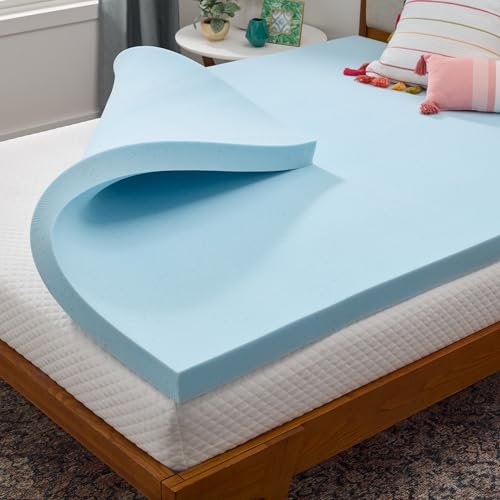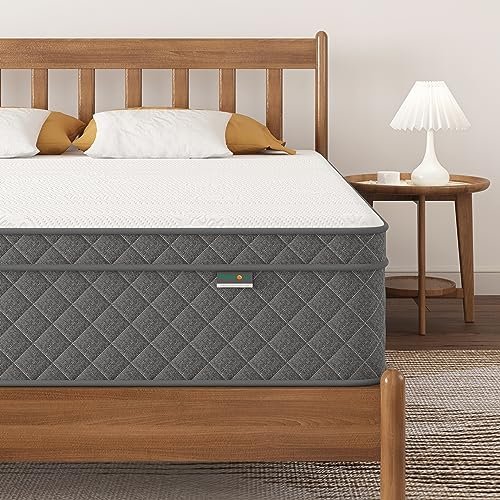
Unlock Stability & Comfort: Your Friendly Guide on How to Adjust a Metal Bed Frame
Is your metal bed frame squeaking, wobbling, or just not feeling as sturdy as it once did? You’re not alone! A loose or improperly adjusted bed frame can lead to restless nights, shorten the lifespan of your mattress, and even pose a safety hazard. But don’t fret – adjusting your metal bed frame is often a straightforward DIY task that can bring back peace, comfort, and stability to your sleep sanctuary.
This detailed guide will walk you through everything you need to know about how to adjust a metal bed frame, offering step-by-step instructions, helpful tips, and common mistakes to avoid. Get ready to reclaim your restful nights!
Why Adjust Your Metal Bed Frame?
Before we dive into the ‘how,’ let’s quickly understand the ‘why.’ A properly adjusted bed frame offers numerous benefits:
- Enhanced Comfort: No more jarring movements or unsettling creaks every time you shift.
- Extended Mattress Lifespan: A stable frame provides even support, preventing premature sagging and wear on your mattress.
- Improved Safety: A wobbly frame can shift or even collapse, especially if subjected to sudden weight or movement.
- Reduced Noise: Tighter connections mean fewer irritating squeaks and groans.
- Better Aesthetics: A level, sturdy bed simply looks better and gives your room a more put-together feel.
Gather Your Tools
Before you start, make sure you have these basic tools on hand. Having them ready will make the process much smoother.
- Adjustable Wrench or Socket Wrench Set: Essential for tightening nuts and bolts.
- Screwdriver (Phillips and/or Flathead): Depending on the type of screws used on your frame.
- Allen Keys (Hex Wrenches): Many modern metal frames use these.
- Level: To ensure your frame is perfectly even.
- Flashlight: To see into those tricky, dark corners under the bed.
- Work Gloves: To protect your hands from sharp edges or pinch points.
Safety First!
Your safety is paramount. Always keep these points in mind:
- Remove the Mattress and Box Spring: This is absolutely crucial. Never attempt to adjust a bed frame with the mattress or box spring still on it. They add significant weight and obstruct your view.
- Clear the Area: Make sure you have enough space to move around the bed frame without tripping.
- Work with a Buddy: For heavier frames or if you need to lift parts, a second pair of hands is invaluable.
- Unplug Any Electrical Components: If your headboard or frame has built-in lights or charging ports, unplug them from the wall.
Step-by-Step Guide: How to Adjust a Metal Bed Frame
Now, let’s get down to business!
1. Tightening a Loose or Wobbly Frame (Most Common Adjustment)
This is by far the most common reason to adjust a metal bed frame. Loose connections are the primary culprits behind squeaks and wobbles.
- Step 1: Clear the Deck: As mentioned, remove your mattress, box spring, and all bedding. Place them safely out of the way.
- Step 2: Inspect Thoroughly: With the frame exposed, take a close look at every connection point.
- Check the Joints: Pay special attention to where the side rails connect to the headboard and footboard.
- Examine the Center Support: If your frame has a central support bar with legs, check its connection points to the side rails and its own legs.
- Look for Missing Hardware: Are any bolts, nuts, or washers missing? If so, you might need to source replacements.
- Step 3: Tighten All Bolts and Screws: Starting at one corner, use your wrench or screwdriver to gently tighten every bolt, screw, and connection point you find.
- Important Tip: Work systematically around the frame. Do NOT overtighten. Overtightening can strip threads, making future adjustments impossible and potentially damaging the frame. Tighten until snug, then give it just a quarter turn more.
- Listen for Creaks: As you tighten, you might hear the frame settle.
- Step 4: Check for Stability: Once you’ve tightened everything, give the frame a good wiggle. Push down on different sections. Does it still wobble? If so, re-examine the loose areas you found and try tightening them again, ensuring everything is snug.
2. Adjusting Bed Frame Height
Some metal bed frames offer the ability to adjust the height of the frame itself, usually through the legs.
- Step 1: Locate Adjustment Mechanisms: Look at the legs of your bed frame. Some have pins that can be pulled out to slide the leg up or down into different slots. Others might have screws or bolts that allow for height extension.
- Step 2: Decide on Your Desired Height: Determine if you want your bed higher or lower.
- Step 3: Adjust Each Leg Evenly: If your legs have pin adjustments:
- Lift one corner of the frame slightly.
- Pull out the pin on that leg.
- Slide the leg to the desired height slot and re-insert the pin securely.
- Repeat this for all four (or more) legs.
- Step 4: Use Your Level: Once all legs are adjusted, place your level across the frame (from side to side and from head to foot). Make small adjustments to individual legs as needed to ensure the frame is perfectly level. An uneven frame can lead to discomfort and mattress wear.
3. Adjusting Width or Length (Less Common)
While most metal bed frames have fixed dimensions, some modular or adjustable designs allow for slight changes in width or length to accommodate different mattress sizes (e.g., converting from a full to a queen).
- Step 1: Identify Adjustable Components: Look for slotted side rails or crossbars that have multiple bolt holes or extension mechanisms. These are usually found on the main support bars that run the length of the bed.
- Step 2: Loosen Necessary Bolts: You’ll likely need to loosen several bolts on the side rails or central support bars that allow them to slide.
- Step 3: Extend or Retract: Carefully slide the components to the desired width or length. Ensure both sides are adjusted equally to maintain symmetry and support.
- Step 4: Re-tighten All Bolts: Once the frame is at the correct dimension, securely tighten all the loosened bolts. Double-check all connections.
4. Reinforcing Central Support (If Applicable)
Many queen, king, and California king metal frames include a central support bar with legs for added stability and to prevent mattress sag.
- Step 1: Inspect the Central Support: Check if the central bar itself is straight and if its legs are firmly attached to both the bar and the floor.
- Step 2: Tighten Connections: Ensure all bolts connecting the central bar to the side rails are tight. Also, make sure the legs of the central support are snug and not wobbly.
- Step 3: Check Leg Contact with Floor: The central support legs should make firm, even contact with the floor. If they are uneven, some designs allow for individual leg height adjustment (similar to the main frame legs), or you might need to carefully use shims if adjustments aren’t built-in.
Troubleshooting Common Issues
- Persistent Squeaking: Even after tightening, some squeaks might remain. This could be due to metal-on-metal friction. Try applying a small amount of lubricant (like silicone spray or WD-40, wiped clean after application) to the joints and bolt threads. Graphite powder can also work well.
- Wobbly Even After Tightening: If the frame still wobbles significantly, inspect for bent or damaged components. A bent leg or a cracked weld might require professional repair or replacement of the damaged part.
- Uneven Mattress: If your mattress still feels uneven, it might not be the frame. First, ensure the frame is perfectly level using your level tool. If it is, then the issue might be with your box spring (if you use one) or the mattress itself.
Common Mistakes to Avoid
- Ignoring the Instructions: Even if you think you know what you’re doing, always refer to your bed frame’s assembly instructions if you have them. They often contain specific details about your model.
- Overtightening Bolts: As mentioned, this is a big no-no. It can strip threads, damage the frame, and make it impossible to get a good, secure connection. Snug plus a quarter turn is usually sufficient.
- Skipping Safety Steps: Working with a heavy frame without removing the mattress or without clearing the area is asking for trouble. Always prioritize safety.
- Working Alone on Heavy Sections: If you need to lift or shift heavy parts of the frame, get help from another person.
- Ignoring Minor Issues: A small squeak today can become a major wobble tomorrow. Address minor issues promptly to prevent them from escalating.
Maintenance Tips for a Lasting Frame
Once your metal bed frame is perfectly adjusted, a little ongoing care will keep it in top shape:
- Regular Checks: Every few months, quickly check the main connection points for any signs of loosening.
- Keep it Clean: Dust and debris can build up in joints. Wipe down your frame periodically.
- Avoid Jumping on the Bed: While tempting, excessive force can strain the frame’s connections and welds.
- Address Issues Promptly: Don’t let small creaks turn into big problems. Take a few minutes to re-tighten or adjust as soon as you notice an issue.
Adjusting your metal bed frame is a simple yet effective way to significantly improve your sleep quality and extend the life of your bedroom furniture. By following these steps, you’ll transform your wobbly, noisy bed into a haven of stability and comfort. Happy sleeping!
Frequently Asked Questions(FAQ)
Q. How do I stop my metal bed frame from squeaking?
A. Squeaking in metal bed frames is often caused by loose bolts, friction between metal parts, or parts rubbing against the floor. Start by tightening all bolts and screws securely with the appropriate wrench or Allen key. If the squeak persists, try applying a dry lubricant like paraffin wax, silicone spray, or even a small amount of petroleum jelly to the joints and connections where metal parts meet. Placing felt pads or rubber stoppers under the frame’s feet can also help if the squeak is coming from contact with the floor.
Q. My bed frame feels wobbly. How can I make it more stable?
A. Wobbling is usually a sign of loose connections or uneven support. First, ensure all bolts, nuts, and screws are tightened completely. Check if any leg or support beam is bent or damaged. If your floor is uneven, use furniture shims or self-adhesive felt pads under the shorter legs to level the frame. For frames with center support legs, ensure they are firmly on the ground and adjusted to bear weight. Sometimes, adding a cross brace or reinforcing the corners with brackets can provide extra stability if the frame design allows.
Q. Can I adjust the height of my metal bed frame? If so, how?
A. Most standard metal bed frames do not have a built-in height adjustment feature. However, some newer models, particularly platform frames, may have adjustable leg extensions or multiple pre-drilled holes for attaching the legs at different heights. If your frame doesn’t, you can achieve a modest height increase by using sturdy bed risers (solid blocks placed under each leg) or by switching to a thicker mattress/box spring combination. Always ensure bed risers are properly sized for your frame’s legs and are stable to prevent accidents.
Q. How do I ensure the center support or slats are properly adjusted for my mattress?
A. Proper center support and slat adjustment are crucial for mattress longevity and comfort. For frames with a center support beam and legs, ensure the legs are firmly planted on the floor, ideally slightly pre-loaded to bear weight. If adjustable, extend them until they make solid contact. For slats, ensure they are evenly spaced (typically no more than 2-3 inches apart for foam mattresses, more for spring) and securely attached to the frame. Many frames have plastic caps or clips to hold slats in place; ensure these are all present and functional. If slats bow or sag, they may need replacement or additional support.
Q. My headboard doesn’t fit my metal bed frame. How can I adjust the frame to accommodate it?
A. Many metal bed frames come with universal headboard brackets that have multiple slots or holes. First, check if your frame’s brackets can be adjusted by sliding them up/down or in/out to align with your headboard’s bolt patterns. If not, you might need to purchase universal adapter plates or extension brackets. These are designed to bridge the gap between misaligned headboard and bed frame holes. Ensure the adapters are securely bolted to both the frame and the headboard for stability.
Q. What if my metal bed frame is uneven on the floor? How do I level it?
A. An uneven bed frame can lead to wobbling and discomfort. To level it, first identify which legs aren’t making firm contact with the floor. You can use a spirit level for accuracy. Once identified, you can use furniture shims (small wedges made of wood or plastic) placed under the shorter legs. Self-adhesive felt pads or rubber feet can also work, providing a slight height increase and protecting your floor. For frames with adjustable feet, simply turn the foot pads to extend or retract them until the frame is level.
Q. Can I adjust the length or width of my metal bed frame?
A. Most metal bed frames are designed for a specific mattress size (e.g., Twin, Full, Queen, King) and are not adjustable in length or width. However, some “expandable” or “convertible” metal frames are specifically designed with telescoping rails to accommodate multiple mattress sizes (e.g., Twin to Full, or Full to Queen). If your frame is one of these, it will have clear mechanisms like pins, clips, or bolts that allow you to extend or retract the side rails to the desired length/width. Consult your frame’s manual for specific instructions. Standard frames cannot be adjusted in this manner without significant modification.
Q. How do I adjust a metal bed frame that was incorrectly assembled and now feels unstable?
A. If instability is due to incorrect assembly, the best approach is often to partially or fully disassemble it and reassemble it carefully. Start by loosening all connections, but don’t remove them completely. Ensure all parts are correctly oriented according to the instruction manual. Then, starting from one corner, tighten all bolts and screws progressively, ensuring the frame is square and level as you go. Pay close attention to connecting pieces, making sure they are fully inserted and aligned before tightening. It’s often helpful to have another person assist to hold pieces in place during reassembly.
Q. My mattress is sagging in the middle. Can I adjust the metal frame to fix this?
A. If your mattress is sagging, the issue might be with the mattress itself, or it could be related to inadequate support from the bed frame. First, check your metal frame’s center support legs and slat system. Ensure all center support legs are firmly on the ground and properly adjusted to bear weight. If your frame uses slats, check if any are broken, bowed, or spaced too far apart. Adding more slats, replacing damaged ones, or installing a robust center support beam (if your frame allows) can often help redistribute weight and reduce mattress sag. However, if the mattress itself is old or worn out, a frame adjustment can only do so much.
Related Articles
7 Top Full Size Bed Frames: What is the Dimensions of a Full Size Bed Frame and More!
Getting a good night’s sleep often starts with the right bed, and for many, a full-size bed is the perfect sweet spot between a twin and a queen…
How Much Is a King Size Sleep Number Smart Bed
How Much Is a King Size Sleep Number Smart Bed? Your Guide to Understanding the Investment Recommended Product: Select Comfort Air Bed Chamber for Sle…
How Much Does a Sleep Number 360 Smart Bed Cost
How Much Does a Sleep Number 360 Smart Bed Cost? Recommended Product: Sven & Son Classic Adjustable Bed Base — head and foot lift, massage, under-…



